American Football vs Soccer: Differences and Comparisons
The world of sports is vast and diverse, with various games capturing the interest and passion of fans across the globe. American football and soccer are two such sports, each boasting its own unique history, rules, and fan base. Although they share similarities in how they are played, American football and soccer have distinct differences that contribute to their individual appeal.
Origins
Origins of American Football and Soccer
Did you know that American football and soccer share a common thread, despite their vast differences? It all comes down to their origins! Like siblings who take on completely different personalities, American football evolved from rugby and soccer in the late 19th century. Younger brother to its counterparts, American football emerged as a new and unique sport in the United States through a combination of rule changes and adaptations.
Meanwhile, soccer has quite an extensive familial ancestry, with roots dating back to ancient civilizations such as Greece, Rome, and China. Centuries-old traditions and ball games have made their mark on the sport we know today as soccer. The Greeks and Romans had their versions of a game that involved kicking a ball, and the Chinese played a sport called “Cuju” as early as the 2nd century BCE, which is remarkably similar to modern soccer. So, while American football is the new kid on the block, soccer has a rich and storied history that connects us to our ancestors and serves as a testament to the timelessness of sport. But no matter your preference, it’s fascinating to consider how two such contrasting games can trace their beginnings to common roots.

Objective
When it comes to scoring objectives, American football and soccer couldn’t be more different. In American football, every play is a strategic battle to advance the ball closer to the opponent’s goal line. Teams combine sheer physical prowess with well-calculated plays to either carry or pass the ball across that ever-important line, resulting in the exhilarating moment known as a touchdown. On the other hand, field goal attempts require kickers to send the ball soaring between the towering goalposts, demanding precision and power with each strike.
Soccer, or as it’s known around the world, football, has its own thrilling moments when it comes to scoring. Players showcase their agility, footwork, and teamwork as they weave the ball through defenders and set up the perfect opportunity to send it hurtling into their opponent’s net. The roar of the crowd as the ball finds its mark can be deafening, as goals in soccer tend to be more scarce and every score is a crucial step towards victory.
As spectators soak in the intensity and drama of both American football and soccer, the excitement that comes with witnessing these diverging yet equally captivating scoring objectives will leave fans on the edge of their seats!

Number of Players
Roll Call on the Field: A Key Difference between American Football and Soccer
When it comes to American football and soccer, it’s fascinating to see how these two beloved sports have unique elements that set them apart, even before the play begins. As a fan of either sport, you’ve likely noticed the number of players on each team. While both sports involve 11 players taking the field, there’s a subtle but important difference that helps shape the way these games unfold.
American Football
In American football, it’s all about a mix of offensive and defensive power. With 11 players on each side, you’ll find a balanced combination of strength, speed, and skill on the field. From powerful linemen blocking their opponents, to agile wide receivers and running backs battling to make big plays, each position has a vital role to play, working together to score touchdowns and dominate the game.
Soccer
On the soccer pitch, you’ll also spot 11 players competing with all their might. However, there’s a crucial distinction you can’t miss. In soccer, one of these 11 players adopts the all-important role of the goalkeeper, whose sole purpose is to protect the team’s goal. This player is the last line of defense and is equipped with specialized skills and tactics to keep the ball out of the net. From heroic saves to commanding the back line, the goalkeeper is a unique figure in the game of soccer.
As you continue to explore and celebrate the worlds of American football and soccer, remember to keep in mind these differences in team composition. They’re just one of the many aspects that make these two sports distinct and captivating to their millions of fans.
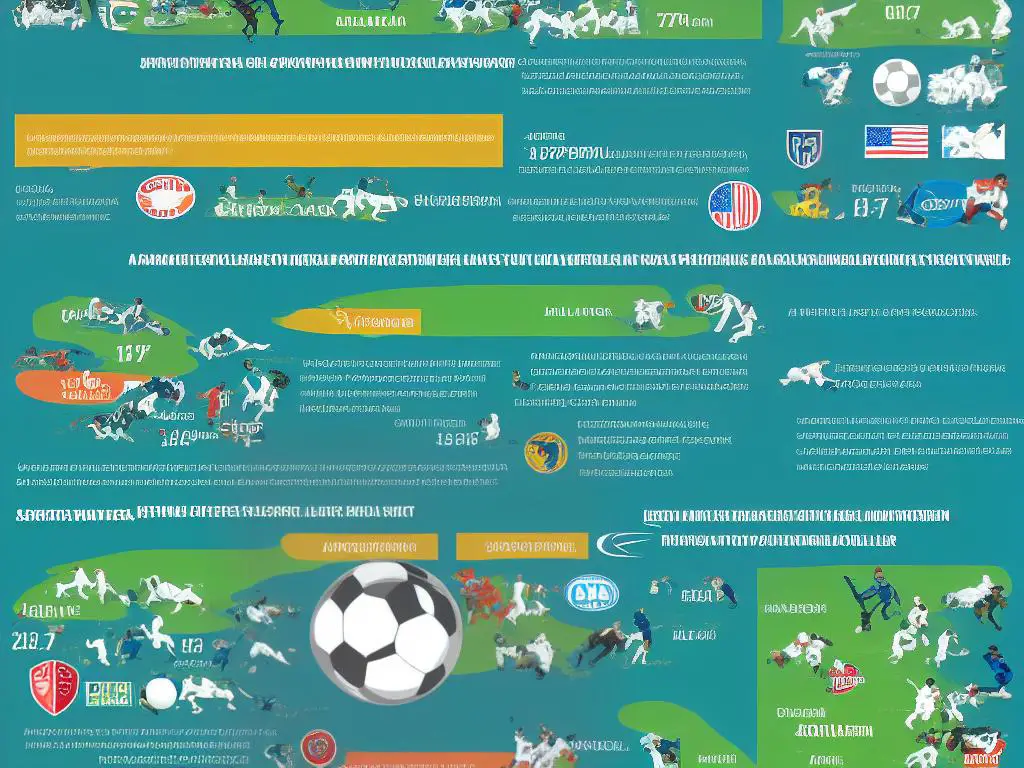
Field Size
Field Size: Comparing the Gridiron and the Pitch
When it comes to field size, both American football and soccer fields showcase a stark difference in dimensions. The classic American football field, commonly known as the gridiron, spans 120 yards in length – including its two 10-yard end zones – and has a width of 53.3 yards. This rectangular field is strategically divided into segments through yard lines, hash marks, and sidelines to guide the players during the game.
Soccer Fields
On the other hand, soccer fields, or pitches, display a more varied set of dimensions. These extensive fields typically range between 100-130 yards in length and 50-100 yards in width, providing players with a larger space to showcase their talents. Given their larger size, soccer pitches offer a higher level of versatility as they can cater to varied requirements, such as different competition levels, climatic conditions, or even geographical constraints.
Differences in Gameplay
The varying field sizes in both sports contribute to the distinct gameplay styles and strategies they incorporate. With a smaller, confined space, American football emphasizes short bursts of high-intensity action, while soccer focuses on fluid movement, strategic formations, and sustained stamina throughout the match.
Playing Surface Differences
Moreover, the surface of these fields also plays a significant role in influencing how the game is played. It is customary for American football games to be played on artificial turf or natural grass surfaces, depending on the stadium and weather conditions. In soccer, however, the pitch is almost exclusively made up of well-maintained natural grass, with FIFA regulations in place to ensure ideal playing conditions.
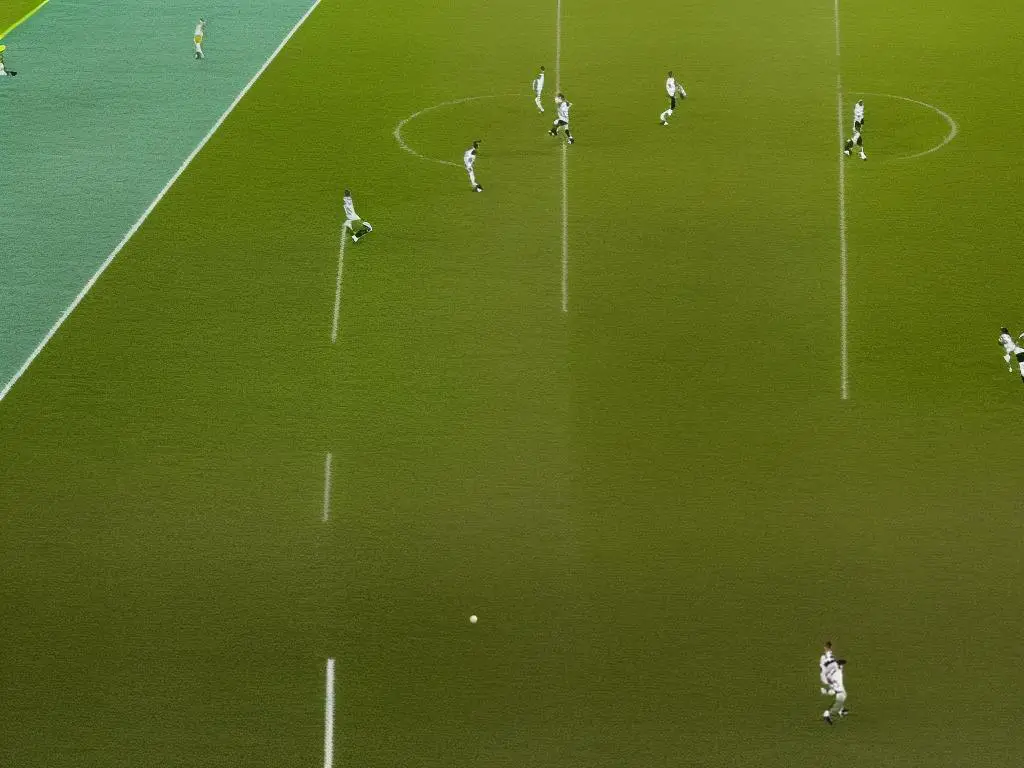
Duration
Get Ready for the Long Haul: Comparing Game Duration in American Football and Soccer
Picture this: You’re nestled in your favorite armchair, a plate of delicious snacks within reach, ready for an exciting game day. But how long do you have to savor these epic sports moments? The answer, unsurprisingly, varies between American football and soccer.
American Football
Time to buckle up for an American football game, where four pulse-pounding 15-minute quarters await you. But don’t be fooled – with stoppages in play, timeouts, and commercial breaks, a game can last upwards of three hours. That’s ample time to jump off your seat with every touchdown, tackle, and Hail Mary pass!
Soccer
On the other hand, soccer offers a different tempo. This beautiful game consists of two 45-minute halves separated by a 15-minute halftime break. With additional stoppage time added at the end of each half to account for injuries or delays, a match lasts approximately 90-120 exhilarating minutes. Expect to find yourself cheering with bated breath as players weave their way across the pitch, looking to score that match-winning goal.
No matter your preference, both American football and soccer promise to deliver a rollercoaster of emotions throughout their game durations. So sit back, grab your snacks, and be ready to enjoy a thrilling ride!

Scoring
Get Ready to Score! A Glimpse into the Thrilling World of American Football and Soccer Scoring Techniques
Put on your team jersey and get ready to cheer, because today we’re diving into the world of scoring in American football and soccer! Each sport has its own unique way of putting points on the board, creating heart-pounding moments that fans live for.
American Football
Let’s kick things off with American football, a game that not only attracts fans with its hard-hitting action, but also its variety of ways to score. Teams can take the lead by recording a touchdown, which involves a player carrying the ball into the opposing team’s end zone or catching a pass inside it. The triumphant moment of a touchdown is always met with rapturous applause and excitement from the fans. And what’s a touchdown without the extra point? Teams have the choice to attempt a 1-point kick or a more challenging 2-point conversion play after a touchdown. But that’s not all – teams can also gain points through field goals, kicked through the uprights by the team’s placekicker, for a total of three points.
Soccer
Now let’s kick a soccer ball around, as we explore soccer’s approach to scoring. Soccer, or as it is known in many parts of the world, football, is a sport that captivates millions globally with its grace, elegance, and of course, goals. While the method of scoring in soccer might seem simple in comparison to its American counterpart, it’s anything but easy. A goal is scored when the ball crosses the goal line entirely between the goalposts and below the crossbar. This means that the entire ball must be over the line for a goal to count. The moment when the ball hits the back of the net sends shockwaves of energy through the stadium and can often leave fans breathless in amazement.
Celebration of Achievements
While American football and soccer may have different methodologies when it comes to racking up points, at the end of the day, they both share one attribute: the incredible moments that unite fans in celebration of their team’s achievement. So, no matter your preference, make sure to get out there and cheer on your favorite teams as they aim for victory through their scoring prowess!
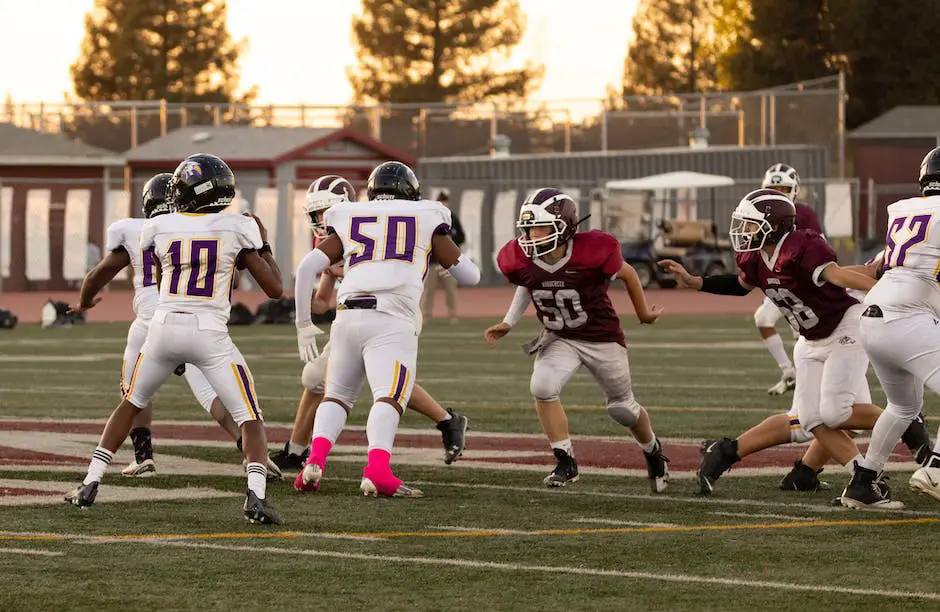
Physicality
American Football vs Soccer: The Battle of Physicality
When it comes to sports, there’s no denying the role that physicality plays in the entertainment and excitement of the game. But how do the widely popular sports of American football and soccer measure up in terms of physicality?
American Football
Physical contact is unquestionably an integral part of the game of American football. With players suited up in protective gear from head to toe, it’s easy to see why this sport is often referred to as a “collision sport.” From tackles to blocks, every play involves intense physical contact between players, as they battle it out to gain yardage and score touchdowns. It’s no wonder fans are often captivated by the adrenaline-pumping, bone-crushing action on the field.
Soccer
Soccer, on the other hand, is primarily a non-contact sport, requiring precise footwork and athleticism to navigate the ball across the field and into the opponent’s net. While there may be occasional contact between players, such as bumping shoulders or jostling for position, the objective is not to overpower the opponent through physical force. Instead, soccer players rely heavily on passing, dribbling, and striking the ball using their feet, legs, and even heads. This sport is more about agility, speed, and teamwork, with players constantly on the move, gracefully dodging opponents and creating opportunities for their teammates.
Don’t be fooled by the less rough-and-tumble nature of soccer. It’s still a highly physical sport that demands incredible stamina, strength, and precision from its athletes. Players must be able to cover long distances, as well as sprint, jump, kick, and change direction with ease – all of which require a high level of physical fitness.
Conclusion
So, while American football may be the reigning champ of hardcore physical encounters, soccer holds its own as a physically demanding sport that showcases the impressive finesse and skill of its athletes. The relentless athleticism and sheer power displayed in both games are sure to keep fans cheering and coming back for more.

Substitutions
Substitutions: A Game-Changer in American Football and Soccer
Picture this: you’re watching an intense match of either American football or soccer, and several players are starting to show signs of fatigue, struggling to keep up with the fast-paced game. This is where the crucial substitution strategy comes into play. Each sport has its unique rules on player substitutions, vastly impacting the games and requiring coaches to plan and think ahead.
American Football Substitutions
In American football, the substitution options provided to coaches are almost boundless. They can substitute players as many times as they desire during the game, making sure their players remain fresh and perform at their peak. This freedom allows the coaches to strategize, bringing in specialized players for specific positions and scenarios.
For example, there are separate offensive and defensive teams, and even dedicated players for kicking! With this continuous rotation, football teams can play to their strengths and exploit their opponents’ weaknesses, ultimately impacting the game’s outcome.
Soccer Substitutions
On the other hand, soccer has a more stringent policy when it comes to substitutions. Teams are allowed to make only three substitutions per match, with a few exceptions in particular competitions. This limitation forces coaches to think more carefully about when and whom to substitute: do they replace an injured player or wait until later in the game when tired players need a break?
The choices made within these confines can make or break a game as fresh substitutes can dramatically change the pace on the field, leading to goals or decisive defensive plays.
Impact on Athletes and Coaches
These substitution differences in American football and soccer influence not only the games themselves but also the athletes’ physical demands and coaches’ tactical approaches. Football lends itself to bursts of full-speed sprints and powerful maneuvers, while soccer requires consistent stamina and strategic planning.
And as a viewer, the excitement and suspense of wondering when a substitution might happen adds an extra layer of depth to these beloved sports.
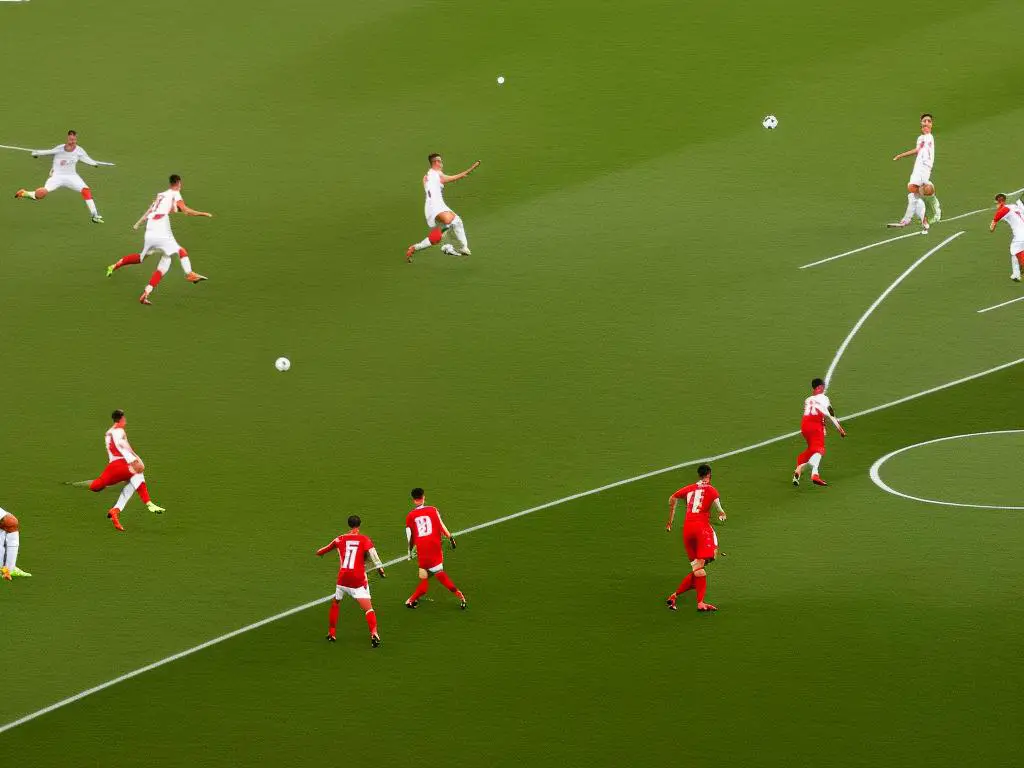
Equipment
Gear Up or Gear Down: Differing Equipment for American Football and Soccer Players
When it comes to their chosen sport, American football and soccer players require drastically different equipment to protect themselves and perform at their best on the field. This disparity highlights the varying demands and physicality of each sport.
American Football Equipment
Stepping onto the gridiron, American football players are like armored warriors ready for battle. Donning helmets with face masks, chin straps, and mouthguards, these athletes protect their heads from the brutal impacts that are an inherent part of the sport. Their upper bodies are shielded by shoulder pads, chest protectors, and back plates designed to disperse force during tackles and collisions. American football players also typically wear padded girdles, thigh guards, and knee pads, all covered by tight-fitting athletic pants. Lastly, they lace up with cleats to ensure proper traction on the field.
Soccer Equipment
On the other hand, soccer players exhibit a more minimalist approach to their attire, reflecting the finesse and agility needed for the Beautiful Game. Soccer players mainly rely on comfortable jerseys and shorts that allow for maximum freedom of movement. Their footwear—cleats, or “boots”—provides both traction and support, while also enabling players to have a better feel for the ball. A crucial part of a soccer player’s protective gear are shin guards, which safeguard their lower legs from injury during tackles and slide challenges. A pair of long socks is worn to keep the shin guards in place and complete the ensemble.
Differences in Equipment
The stark differences in equipment between these two popular sports serve to underscore their unique styles of play. The heavily protected American football player symbolizes the raw power and fierce intensity typical of this contact sport. In contrast, the lightly geared soccer player emphasizes the grace, speed, and fluidity that characterizes this global pastime, allowing for the highest level of finesse and creativity on the pitch.
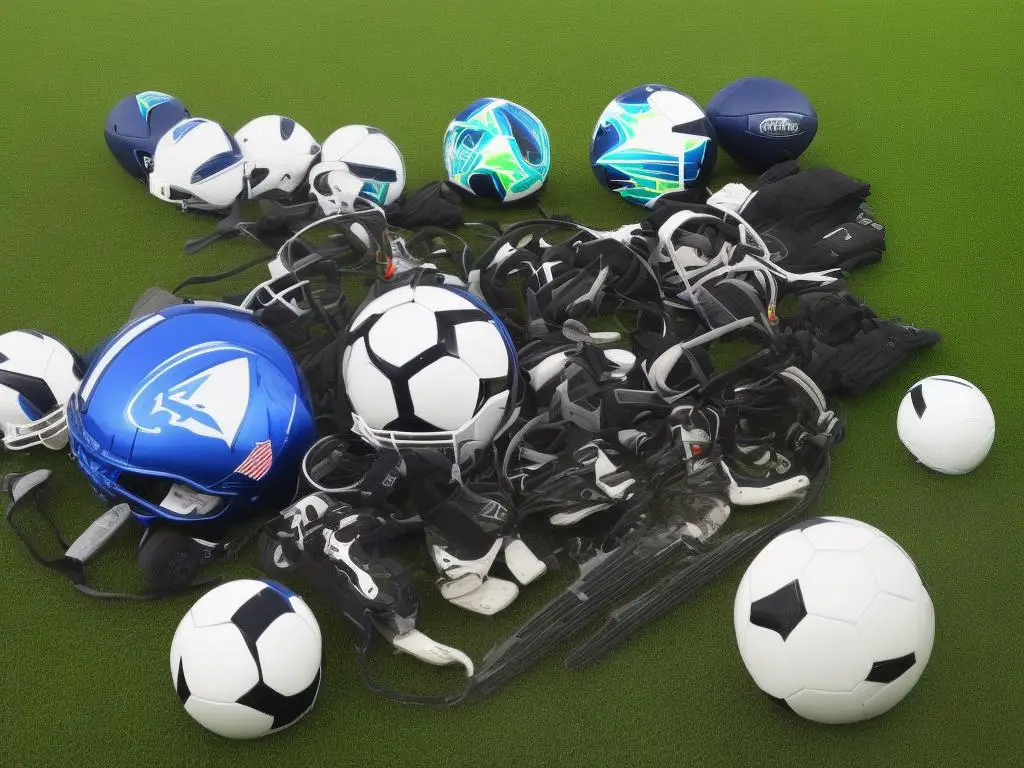
Popularity
Popularity: A Tale of Two Sports
Sports have always held a unique place in cultures around the world, and when it comes to American football and soccer, this is certainly no exception. Both games have garnered a loyal and dedicated fan base, but their geographical reach and overall popularity vary quite a bit.
American Football
On one hand, American football reigns supreme within the borders of the United States. With its adrenaline-pumping intensity and fierce competitive spirit, this beloved game has captured the hearts of millions upon millions of Americans. Whether it’s gathering around the television on a Sunday afternoon or donning your favorite team’s jersey at a packed stadium, there’s no denying the electric atmosphere surrounding an American football game.
Soccer
But what about beyond the USA? Here’s where soccer takes center stage. As the most popular and widely followed sport across the globe, soccer – also known as football in many countries – has undoubtedly reached the furthest corners of the world. Spanning from the bustling streets of Europe to the vibrant communities of South America, soccer has managed to unite people of all backgrounds, languages, and cultures. This international appeal has led it to be dubbed “The World’s Game.”
There are several reasons why soccer has reached such astounding levels of popularity. For one, it’s an easily accessible sport that does not require much equipment, making it a favorite pastime among both rural and urban communities alike. Additionally, soccer’s rich history and participation in prominent events such as the World Cup have only added to its widespread adoration.
Conclusion
While American football is the king of the sporting world in the US, soccer rules supreme on a global scale. Fans of both games can agree, though, that there’s nothing quite like the feeling of cheering on your favorite team and sharing the excitement with fellow supporters. It’s these shared experiences that ultimately make sports so special and universally loved.

Ultimately, the excitement and allegiance towards either American football or soccer is fueled by the meaningful distinctions between the two sports. From their origins and objectives to the number of players and equipment used, both games embody characteristics that have captivated fans for generations. As sports enthusiasts, we are fortunate to have access to a diverse array of games that speak to our personal interests and unite us in our shared passion for the competitive spirit.
